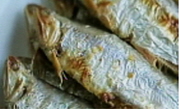1890년대부터 1920년대까지 지어진 근대 성당들에 관한 기존의 선행연구들은 그동안 건축사 분야에서 주로 진행되어왔다. 본 논문에서는 성공회 강화성당과 온수리성당의 건축과 유물을 중심...
http://chineseinput.net/에서 pinyin(병음)방식으로 중국어를 변환할 수 있습니다.
변환된 중국어를 복사하여 사용하시면 됩니다.
- 中文 을 입력하시려면 zhongwen을 입력하시고 space를누르시면됩니다.
- 北京 을 입력하시려면 beijing을 입력하시고 space를 누르시면 됩니다.

강화지역 성공회 성당을 중심으로 본 근대 한옥 성당의 건축과 유물 = Architecture and Relics of Modern Korean-style Churches Centered on the Anglican Church in Gangwha Area
한글로보기https://www.riss.kr/link?id=A109241838
-
저자
박아림 (숙명여자대학교)
- 발행기관
- 학술지명
- 권호사항
-
발행연도
2024
-
작성언어
Korean
-
주제어
강화도 ; 성공회 ; 십자가의 길 ; 파리 외방 전교회 ; 천주교 ; 한옥 성당 ; Ganghwado ; Anglican Church ; Way of the Cross ; Missions étrangères de Paris MEP ; Catholic Church ; Hanok Church
-
등재정보
KCI등재후보
-
자료형태
학술저널
-
수록면
303-339(37쪽)
- 제공처
-
0
상세조회 -
0
다운로드
부가정보
국문 초록 (Abstract)
1890년대부터 1920년대까지 지어진 근대 성당들에 관한 기존의 선행연구들은 그동안 건축사 분야에서 주로 진행되어왔다. 본 논문에서는 성공회 강화성당과 온수리성당의 건축과 유물을 중심으로 동시기 천주교 한옥 성당들과 비교하여 건축형식과 유물현황 및 유입 경로를 고찰하여 근대 성당 내부의 성화와 성상을 복원 연구하는데 기초적인 자료를 제시하고자 하였다. 특히 강화성당을 포함하여 세계유산 등재 추진 대상의 10개의 한옥 성당들에 남아있는 초기의 성상들과 십자가의 길 14처 성화에 주목하였다. 성공회 강화성당과 천주교 익산 화산성당, 안성 구포동 성당, 서산 상홍리공소, 장수 수분공소, 진안 어은공소의 십자가의 길 성화는 화면 구성과 화풍, 액자의 형태, 인쇄형식 등이 유사하여 20세기 초 성공회와 천주교의 전통 한옥 성당의 내부 공간의 장엄에서 특정 성화를 이용하여 종교의 제의와 신념을 어떻게 전파하고자 했는지 살펴볼 수 있는 좋은 사례이다. 성공회와 천주교가 비록 종파는 다르나 선교 초기 십자가의 길 14처 성화를 통하여 기도의 형식과 내용을 공유하고 공통의 신앙심을 높이고자한데 주목해야 할 것으로 생각된다. 근대 한국에 전해진 십자가의 길 성화는 유럽에서 인쇄 상본화의 형식으로 유사한 성화가 전파되어 파리 외방 전교회 등을 통하여 각 성당과 공소에 보급된 것으로 생각된다. 십자가의 길 성화를 포함한 근대기 서양의 성화들은 종교적 관념과 전례의 형식을 전파하는 기능과 함께 시각문화로서 근대 한국의 신자들에게 서양의 문화와 미술을 전하는 하나의 수단이 될 수 있었을 것이다.
다국어 초록 (Multilingual Abstract)
Focusing on the architecture and relics of the Anglican Church of Ganghwa and Onsuri, this study examined modern religious architecture and art in terms of the architectural form and the arrangement and introduction of sacred objects such as altars, i...
Focusing on the architecture and relics of the Anglican Church of Ganghwa and Onsuri, this study examined modern religious architecture and art in terms of the architectural form and the arrangement and introduction of sacred objects such as altars, icons, and paintings that adorn the interior, compared to those of the Catholic Hanok churches built at the same time. Existing previous studies on modern churches built from the 1890s to the 1920s were limited to architectural history, so this study aimed to present basic data for restoration by studying the paintings and icons inside modern churches as part of the study of modern Christian art. In particular, attention was paid to the 14 Stations of the Cross paintings remaining in major Hanok churches, including Ganghwa Cathedral, which are being promoted for World Heritage registration. The Stations of the Cross paintings of the Anglican Church of Ganghwa, the Catholic Church of Iksan Hwasan, the Catholic Church of Anseong Gupo-dong, the Seosan Sangheung-ri Church, the Jangsu Subun Church, and the Jinan Eoeun Church are similar in terms of composition, style, frame shape, and print format, and are good examples for examining how the Anglican Church and the Catholic Church in the early 20th century attempted to spread religious rituals and beliefs by using specific paintings to magnify the interior space of traditional Korean arhictecture. Although the Anglican Church and the Catholic Church are different denominations, it is importantto note that they attempted to share the form and content of prayers and increase common faith through the 14 Stations of the Cross paintings in the early missionary work. It is thought that the Stations of the Cross paintings that were introduced to modern Korea were similar paintings that were spread in Europe in the form of prints and distributed to each cathedral and public office through the Missions étrangères de Paris, MEP. Modern Western paintings, including the Stations of the Cross paintings, could have served as a means of spreading Western culture and art to modern Korean believers as a visual culture, along with the function of spreading religious ideas and forms of liturgy.
동일학술지(권/호) 다른 논문
-
- 한국유라시아연구원
- 조채영
- 2024
- KCI등재후보
-
음양중오행론에 대한 고찰- 유라시아 고대사상의 원형 회복과 현대적 계승
- 한국유라시아연구원
- 조인정
- 2024
- KCI등재후보
-
K-드라마에 대한 우즈베키스탄 시청자들의 인식 조사 연구- 시청 동기, 시청 태도와 방문 의도 요인을 중심으로
- 한국유라시아연구원
- 악바로브 아자맛
- 2024
- KCI등재후보
-
유라시아 지역의 인류 진화와 구석기문화- 이동, 적응 그리고 지역 진화
- 한국유라시아연구원
- 배기동
- 2024
- KCI등재후보




 DBpia
DBpia






